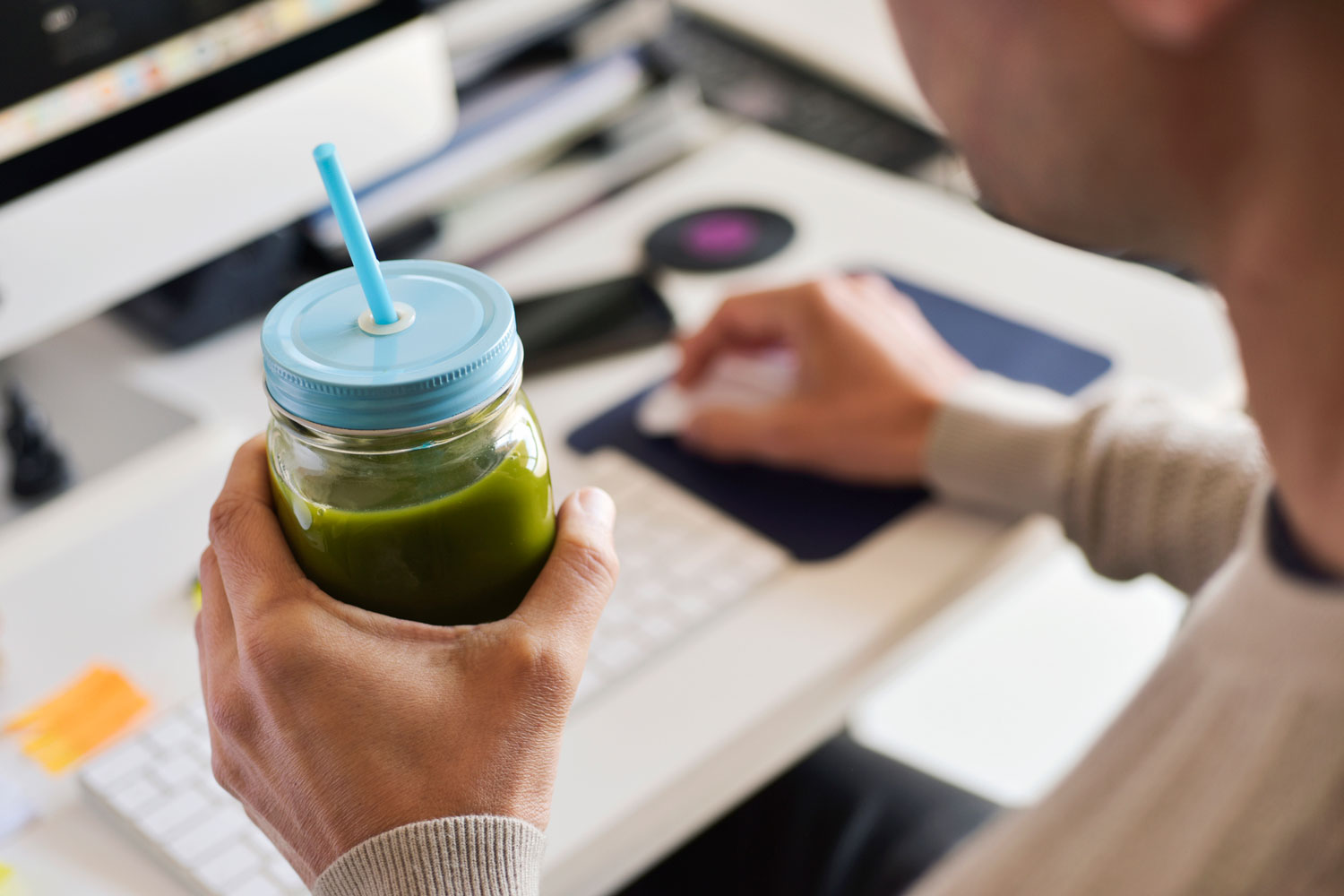When celebrities offer nutrition advice, we’re like, Uhhh, don’t you have a personal chef? So when we found these seven super-fit, super-healthy, super-regular guys with jam-packed lives, we had to ask ’em, “How do you eat?”
These guys prove that investing time and energy in high-level workouts and eating well to support them don’t have to fight for priority. These guys have secrets for making takeout healthy, eating well in social situations, making meal prep a cinch and more. Here are their genius solutions:
The Ultrarunning Schoolteacher: Bringing Lots of Lunch

The guy
Jason Hardrath, 23, is an elementary-school health and PE teacher and an accomplished ultrarunner; he was the first person to set 100 fastest-known times.
The challenge
Eating mostly plant-based meals when you’re a schoolteacher in a rural area and it’s not easy to just pop out quickly and grab a healthy lunch.
The solutions
Packing lunch: One classic: “I make a salad by taking the whole family-sized tub of salad that you buy at the grocery store, opening the top, adding nuts, seeds, colorful cut veggies, and quinoa or another protein, and eating the whole thing myself,” he says. Another: two or three packets of ramen noodles mixed with bell pepper and Gnarly Sports Nutrition Collagen Pro protein supplement.
Replenishing after a long run: His daily diet is pretty healthy, but an epic run of ten hours or more requires a different strategy. “There’s no way I eat enough calories while going through technical terrain,” Hardrath says. “I try to follow every outing with a protein shake. Then I eat everything that sounds good to me.”
The Rower: Attempting an Epic Journey—On Plants

The guy
Charlie Layton, 31, the head chef at Basic Kitchen in Charleston, South Carolina, is training for the 2022 Talisker Whisky Atlantic Challenge, in which rowing teams traverse 3,000 nautical miles in roughly 75 days.
The challenge
Staying fueled on a vegan diet that has flavor—but isn’t bulky: All of his food for 75 days needs to fit on that boat without crowding out the other gear.
The solution
Really good couscous. And loads of flavourful condiments: “It’s vital that when you have to eat that much in a day, you have to want to eat it,” Layton says. He’s developed a few couscous recipes that supercharge those carbs with taste; he also keeps a stash of condiments (ketchup, mustard, mango chutney) to add to freeze-dried meals by Backpacker’s Pantry. “This isn’t just about nutrition,” he says. “This is about the positive mental effect food can have when it comes to morale.”
Here, his Sun-Dried Tomato Couscous recipe:
Ingredients: ½ cup uncooked couscous, ½ cup pistachios, ½ cup pea protein powder, 1 tsp kosher salt, 1 tsp roasted garlic powder, 1 tsp granulated onion, ½ tsp fennel seeds, ½ tsp dried oregano, ½ tsp dried basil, 2 tsp dried parsley, 8 pieces dry-packed sun-dried tomatoes (cut into small pieces), 1 Tbsp extra-virgin olive oil
Method: Mix in a sealable container. Add 1 ½ cups boiling water. Let stand for 20 minutes. Feeds 1 rower (half is good for regular guys). 885 calories, 51g protein, 79g carbs, 43g fat
The Executive/Dad/Triathlete: Eating Smart with No Time
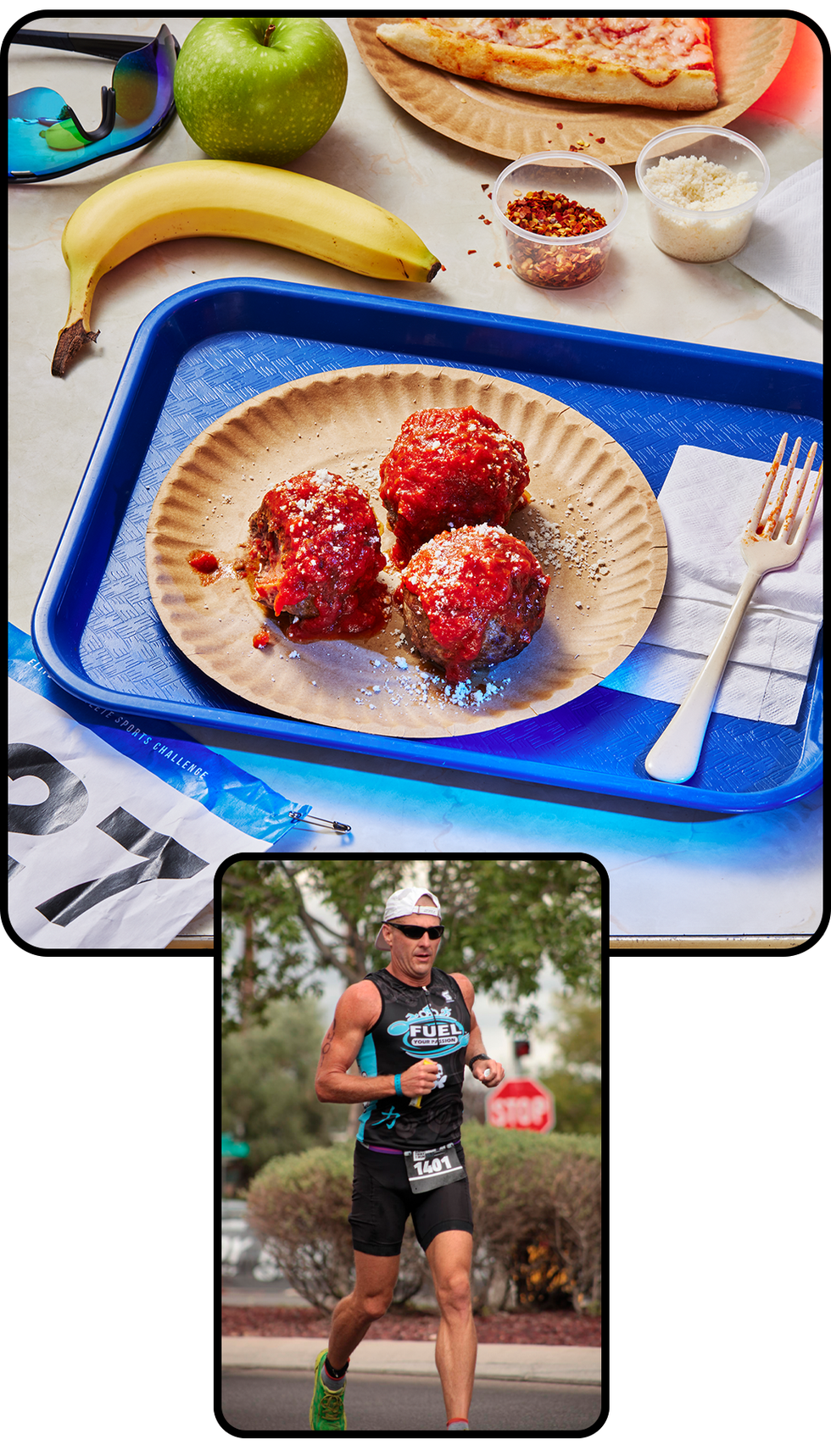
The guy
Scott Tompkins, 53, is a counsel in business affairs who’s also an elite age-group triathlete. He’s raced in the Ironman World Championship in Kona three times.
The challenge
Tompkins works 50 hours a week and works out for two hours on weekdays, five to six each weekend day. During race season, that’s 20 to 22 hours a week of training, on top of eating, parenting, doing chores, and, oh yeah, getting sleep.
The Solution
Flexibility. Instead of setting rigid rules around macros, calories, or meal timing, Tompkins asks himself before eating, How is this food going to fuel my training and recovery? Fresh fruit, vegetables, nuts, and proteins make up his menu. When they’re not available, he doesn’t stress.
Here’s how he streamlines mealtimes:
Think B+: An A+ diet is unrealistic and unattainable, Tompkins says. A B+ diet—meaning most of the time you eat well—is more than enough to meet your training needs and you can sustain it over the long term.
Dine Out, Please: You can have a good diet and a life. If Tompkins is at a pizza place after his son’s water polo game and protein fills his training needs, he orders a side of meatballs. If they go Mediterranean and he needs carbs, he gets brown rice with a little meat.
The Figure Skating Program Manager: Making Small Meals
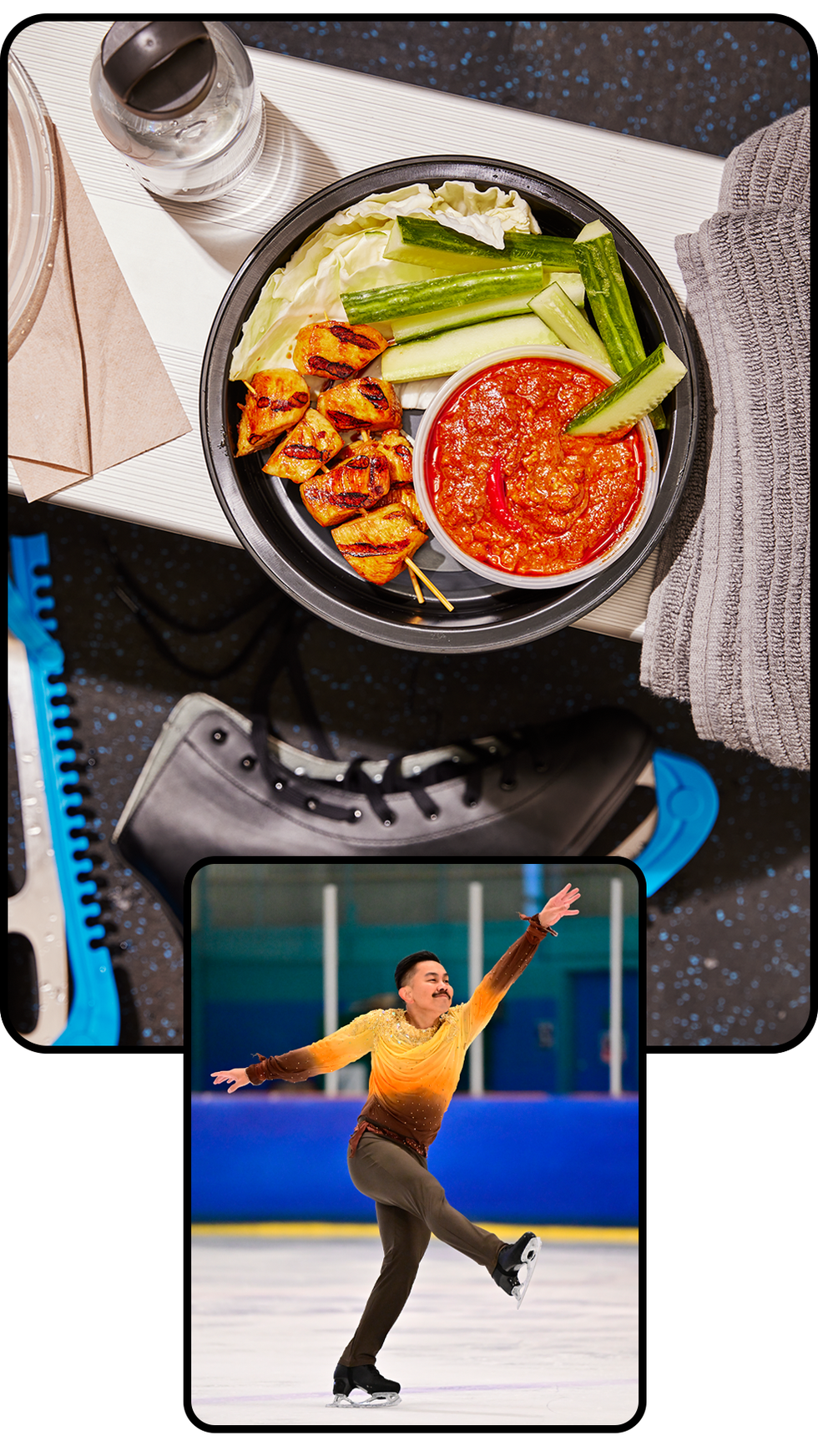
The guy
IAN CATINDIG, 45, is a Google program manager and a competitive figure skater.
The challenge
A skate/work/gym/work routine that demands all-day fueling, with a target protein count of 100 to 150 grams daily.
The solution
Three small meals and two or three snacks a day: “They can’t be boring!” Catindig says. So he leverages his Filipino heritage and some nearby Cambodian restaurants:
• For lunch or dinner, he’ll modify sinigang—a Filipino tamarind-based, sour-savory pork stew—by dropping the pork and adding extra okra, water spinach, or kale. He’ll also have chicken thighs and a cup of rice.
• For snacking, he’ll pick up some chicken skewers and prahok ktis, a ground-pork dip, at a Cambodian restaurant.
Catindig learned to eat small meals to take off pandemic pounds. At first, eating less more often seemed daunting. Then he discovered he liked it. “I’m not ‘full full,’ and it allows me to blast through a workout instead of starting out strong and tapering off.” —Marty Munson
The Bodybuilding Lawyer:Leaning on Meal Prep

The guy
Jared Foley, 40, is a lawyer and an amateur bodybuilder, most recently on the podium at the National Physique Committee’s 2022 Championships.
The challenge
Eating every three hours during a heavy workday.
The Solution
Meal prep: Foley cooks for an hour on Sundays, packing everything for the week into containers he can take to the office. In each meal, he has about eight ounces of protein (grilled chicken or tilapia), eight ounces of white rice, and four ounces of vegetables. Yes, he does it all in one hour. Here’s how:
Order Your Ingredients: Rather than hauling all that food from the grocery store to his home in Brooklyn, Foley orders cooked protein from Eat Clean Bro, an online meal-prep company, and then makes enough rice for his meals at work to last the week. The exception to that system: fish, which doesn’t hold up like the other proteins do. Instead, he buys uncooked fish, freezes it, and then cooks it up quickly himself a few days a week.
Befriend Fire: Hot sauce busts up the boredom of eating the same thing every day. And there’s a world of varieties out there that bring more than just heat. Try heatonist.com, which offers subscription boxes featuring hot sauces ranging from garlic infused to everything bagel.
The Competitive Chef: Using Liquid Fuel
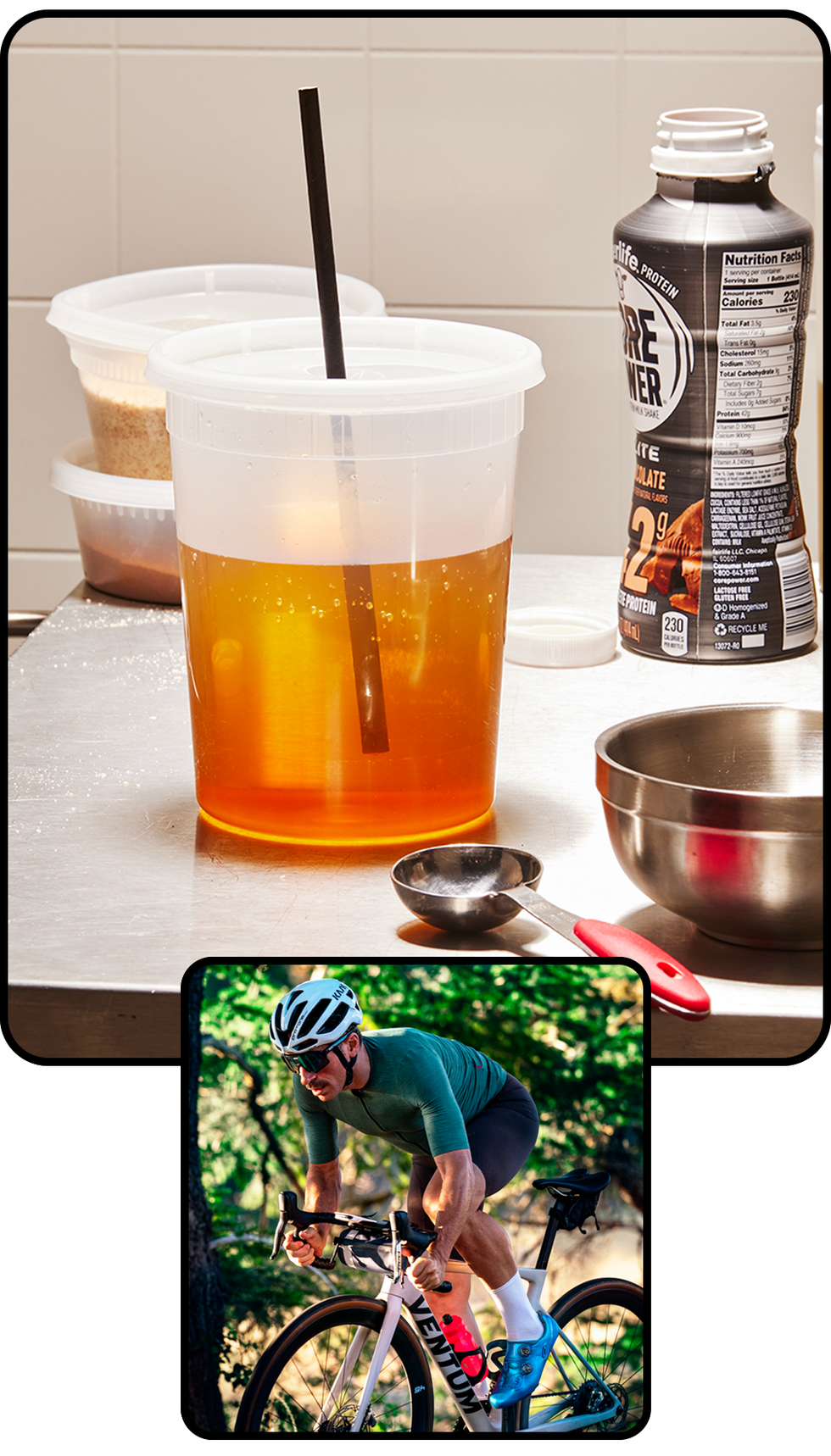
The guy
Matthew Accarrino, 45, is the chef at the Michelin-starred restaurant SPQR and the weekend pop-up Accarrino’s Coffee & Donuts, both in San Francisco. As a competitive cyclist, he’s racked up some 12,000 miles this year and 1 million feet of elevation.
The challenge
To support this kind of training volume, Accarrino needs nutrients, and also calories, calories, calories.
The solution
Liquids containing easily digestible carbs or protein. Although Accarrino has raced competitively on and off throughout his life, he hit a fitness plateau six years ago. “I realised that I wasn’t eating well enough—not in terms of quality but quantity,” he says. The fix involved making foods like date-studded rice cakes for the start of long rides and turning to high-calorie drink mixes toward the end. “I basically train on maple syrup,” Accarrino says, and he stays fueled in between with protein drinks. His favorite power concoctions:
For long-ride fuel: Lemon Tea Mapleaid by UnTapped with an extra glug of maple syrup. The caffeine from the tea in the drink mix provides pep, and the double dose of syrup lends a charge of easily digestible carbs.
For between-ride power: Liquid protein. A man can cook and eat only so much chicken breast. “Liquid protein helps make sure I hit my protein goals and is just easier,” Accarrino says. He chooses low-sugar protein drinks to help in his push to lose fat and build muscle. “I have much more power now,” he says.
The Ninja Warrior: Staying Lean on Takeout
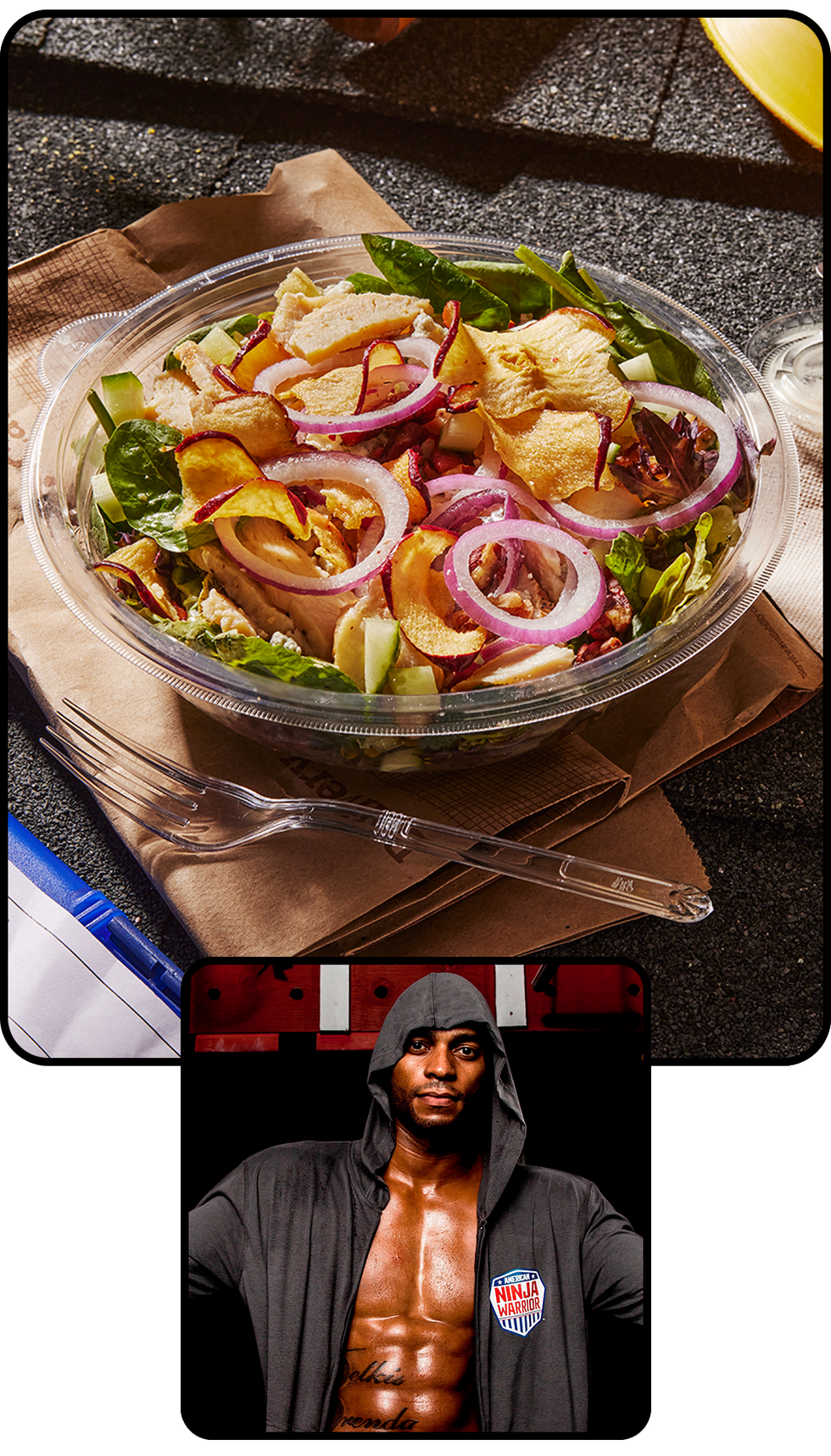
The guy
Jody Avila, 37, is a commercial air-conditioning technician and seven-time American Ninja Warrior competitor.
The challenge
“I’m always traveling to a different location for jobs, and I work on hot roofs. Since I have no access to a fridge, I tried putting a stocked ice chest in my truck to keep salads from going bad. It was a lot of effort to try to keep that many fresh ingredients in the house all the time and keep them from spoiling.”
The solution
Smart takeout: “I’ll drive as many as 20 minutes to buy a salad at whatever fast-casual restaurant is nearest to where I’m working. Extra protein on it keeps me fueled between breakfast—oatmeal with cinnamon and almond milk—and dinner, often two black-bean quinoa burgers with a side of grains and a large sliced avocado. Snacks—a banana with peanut butter before my workout and a chocolate protein shake after—fill the gaps.”
Here’s exactly what he orders at two popular spots:
From Panera: “Fuji apple salad with chicken. I get extra chicken plus a French baguette.”
From Salata: “I put lots of veggies on there, plus fruit, pumpkin seeds, croutons, extra-pesto chicken, a very little bit of Caesar dressing, and a small croissant.”
This story originally appeared in the March, 2023 issue of Men’s Health Australia.










